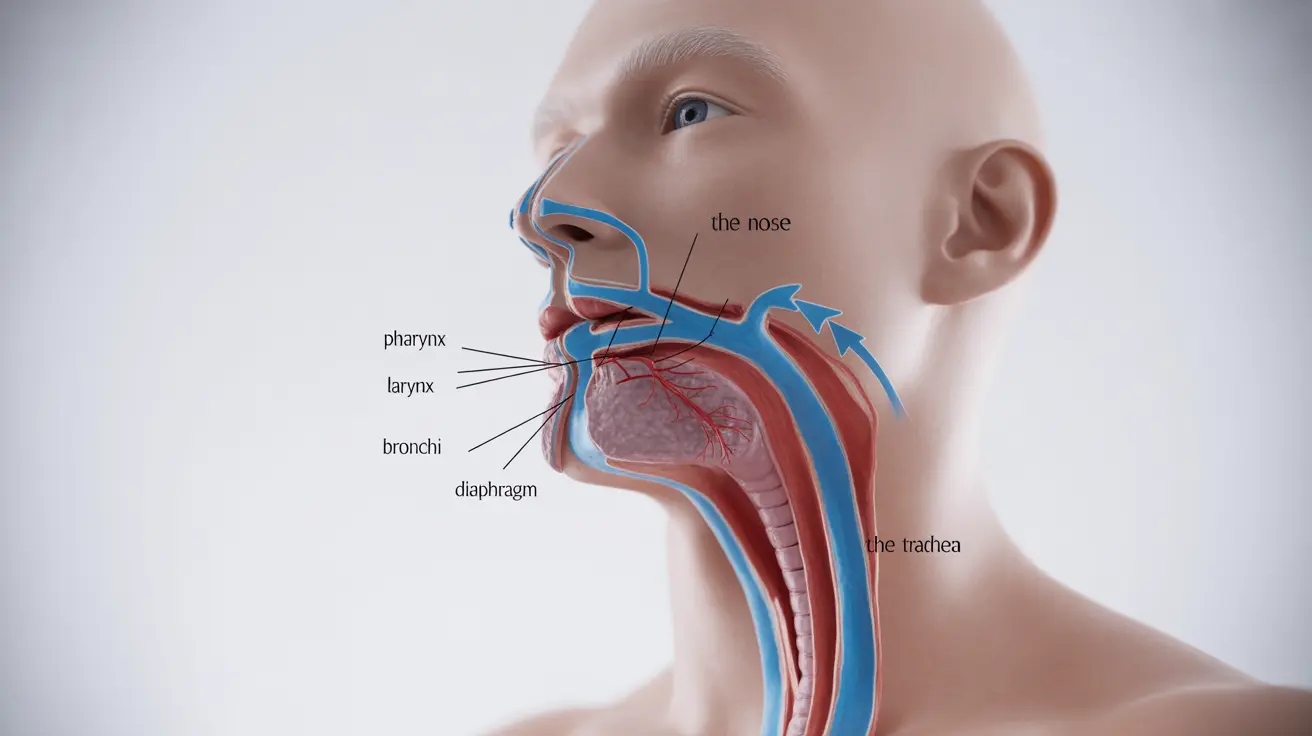The respiratory system is a remarkable network of organs and tissues that work together to keep you alive by facilitating breathing and gas exchange. This vital system ensures your body receives the oxygen it needs while removing harmful carbon dioxide. Understanding how your respiratory system functions can help you better appreciate its importance and maintain your respiratory health.
The Essential Functions of Your Respiratory System
Your respiratory system performs several critical functions that keep your body functioning optimally. Its primary role is to facilitate gas exchange – bringing oxygen into your bloodstream and removing carbon dioxide. This process, known as respiration, involves both breathing mechanics and cellular gas exchange.
The Journey of Breath: How Air Moves Through Your Body
The Upper Respiratory Tract
When you breathe in, air first enters through your nose or mouth. The nasal passages play a crucial role by warming, humidifying, and filtering the air before it travels deeper into your respiratory system. Tiny hairs called cilia and mucus membranes trap dust, bacteria, and other potentially harmful particles.
The Lower Respiratory Tract
After passing through the upper airways, air moves through your trachea (windpipe) and into the bronchial tubes. These airways branch into smaller and smaller passages, eventually reaching tiny air sacs called alveoli, where the actual gas exchange occurs.
The Breathing Mechanism
Breathing is made possible through the coordinated effort of several muscles, primarily the diaphragm and intercostal muscles. The diaphragm, a dome-shaped muscle beneath your lungs, contracts and flattens during inhalation, creating negative pressure that draws air into your lungs. During exhalation, these muscles relax, allowing air to flow out naturally.
Gas Exchange and Circulation
Inside your lungs, oxygen from the inhaled air passes through the thin walls of the alveoli into nearby blood vessels. Simultaneously, carbon dioxide from your blood moves in the opposite direction, entering the alveoli to be exhaled. This efficient exchange system ensures your body's cells receive the oxygen they need while removing waste gases.
Common Respiratory System Disorders
Several conditions can affect your respiratory system's function, including:
- Asthma
- Chronic Obstructive Pulmonary Disease (COPD)
- Bronchitis
- Pneumonia
- Upper respiratory infections
- Lung cancer
Many of these conditions can be prevented or managed through lifestyle choices such as not smoking, avoiding air pollutants, and maintaining good overall health.
Frequently Asked Questions
What is the main function of the respiratory system and how does it help the body get oxygen?
The respiratory system's main function is to supply oxygen to the body and remove carbon dioxide. It accomplishes this through breathing and gas exchange in the lungs, where oxygen from inhaled air enters the bloodstream through tiny air sacs called alveoli.
How do the lungs and diaphragm work together to make breathing possible?
The diaphragm contracts and flattens during inhalation, creating space for the lungs to expand and draw in air. When exhaling, the diaphragm relaxes, returning to its dome shape, while the lungs' natural elasticity pushes air out.
What role do the nose and airways play in filtering and protecting the lungs?
The nose and airways contain mucus membranes and tiny hair-like structures called cilia that trap dust, bacteria, and other particles. They also warm and humidify incoming air before it reaches the lungs.
How does the respiratory system remove carbon dioxide from the body?
Carbon dioxide moves from the bloodstream into the alveoli through diffusion. When you exhale, this waste gas is expelled from your lungs through the airways and out of your body.
What are common health problems that can affect the function of the respiratory system?
Common respiratory problems include asthma, COPD, bronchitis, pneumonia, and upper respiratory infections. These conditions can affect breathing efficiency and gas exchange, but many can be managed with proper medical care and lifestyle changes.




